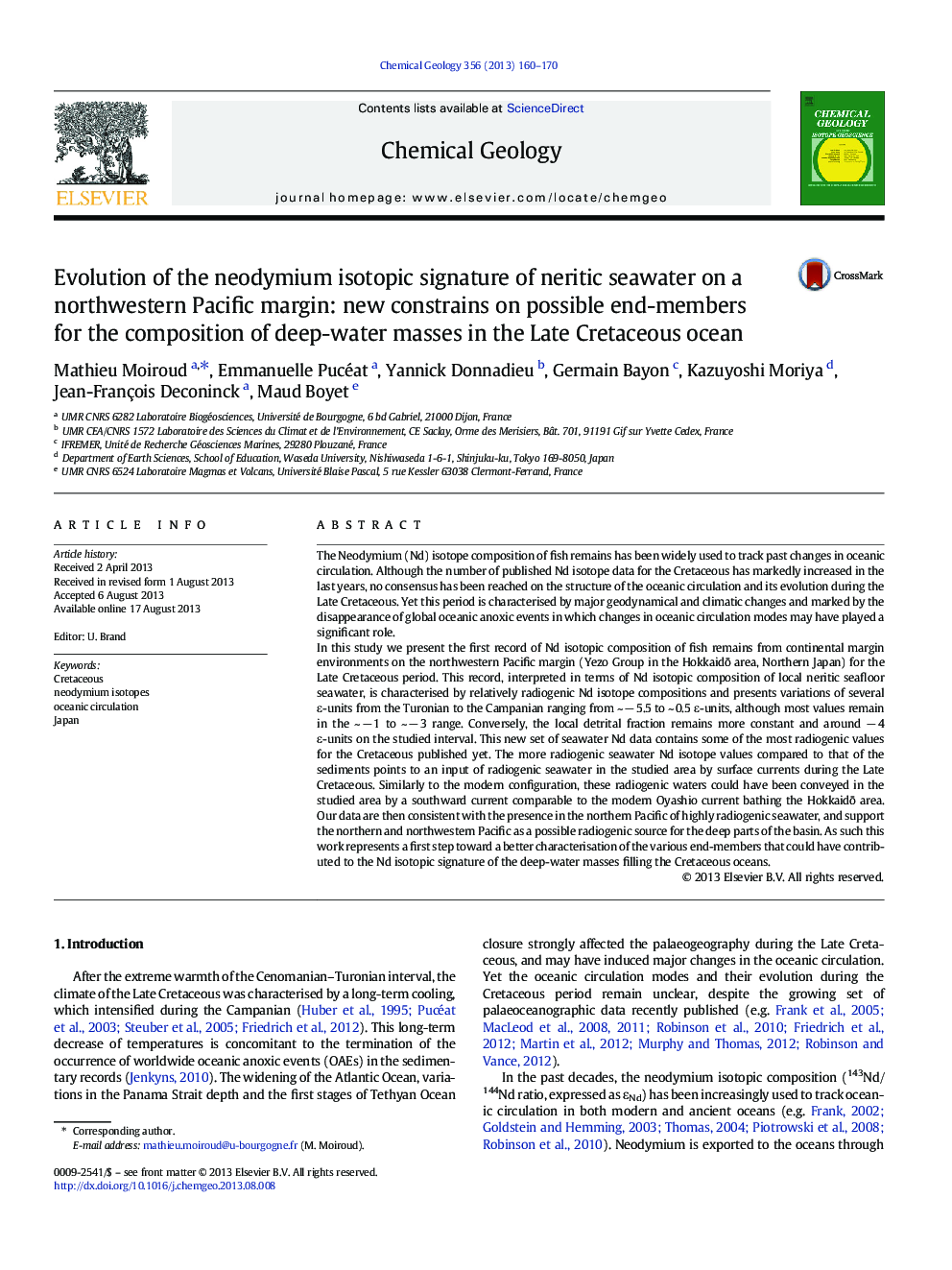| کد مقاله | کد نشریه | سال انتشار | مقاله انگلیسی | نسخه تمام متن |
|---|---|---|---|---|
| 4698902 | 1637613 | 2013 | 11 صفحه PDF | دانلود رایگان |
• Neodymium isotopic composition analyses.
• Late Cretaceous fossil fish debris and detrital fraction samples from Japan.
• Radiogenic signature of neritic seafloor seawater.
• Supporting the northern and northwestern Pacific as radiogenic sources for the Pacific deep circulation.
The Neodymium (Nd) isotope composition of fish remains has been widely used to track past changes in oceanic circulation. Although the number of published Nd isotope data for the Cretaceous has markedly increased in the last years, no consensus has been reached on the structure of the oceanic circulation and its evolution during the Late Cretaceous. Yet this period is characterised by major geodynamical and climatic changes and marked by the disappearance of global oceanic anoxic events in which changes in oceanic circulation modes may have played a significant role.In this study we present the first record of Nd isotopic composition of fish remains from continental margin environments on the northwestern Pacific margin (Yezo Group in the Hokkaidō area, Northern Japan) for the Late Cretaceous period. This record, interpreted in terms of Nd isotopic composition of local neritic seafloor seawater, is characterised by relatively radiogenic Nd isotope compositions and presents variations of several ε-units from the Turonian to the Campanian ranging from ~ − 5.5 to ~ 0.5 ε-units, although most values remain in the ~ − 1 to ~ − 3 range. Conversely, the local detrital fraction remains more constant and around − 4 ε-units on the studied interval. This new set of seawater Nd data contains some of the most radiogenic values for the Cretaceous published yet. The more radiogenic seawater Nd isotope values compared to that of the sediments points to an input of radiogenic seawater in the studied area by surface currents during the Late Cretaceous. Similarly to the modern configuration, these radiogenic waters could have been conveyed in the studied area by a southward current comparable to the modern Oyashio current bathing the Hokkaidō area. Our data are then consistent with the presence in the northern Pacific of highly radiogenic seawater, and support the northern and northwestern Pacific as a possible radiogenic source for the deep parts of the basin. As such this work represents a first step toward a better characterisation of the various end-members that could have contributed to the Nd isotopic signature of the deep-water masses filling the Cretaceous oceans.
Journal: Chemical Geology - Volume 356, 9 October 2013, Pages 160–170
